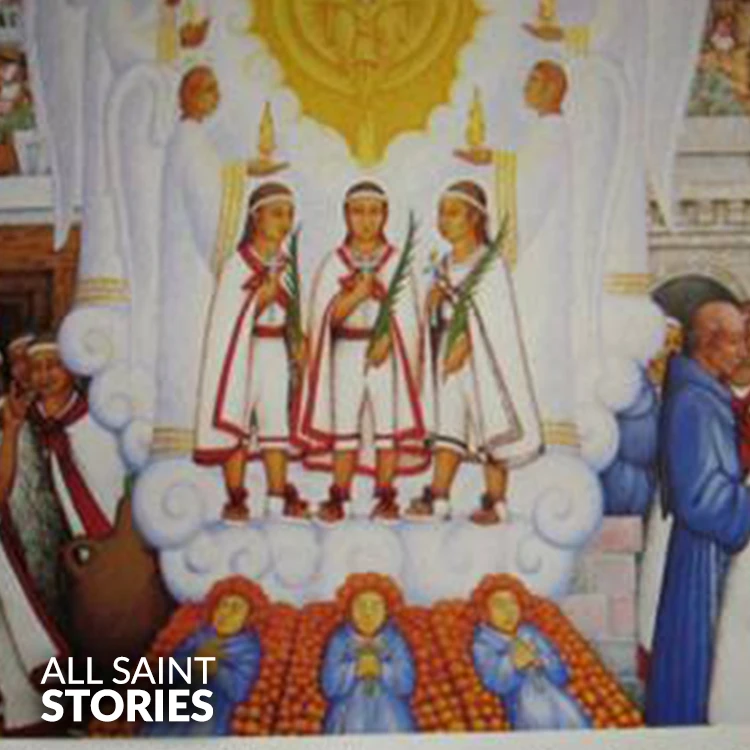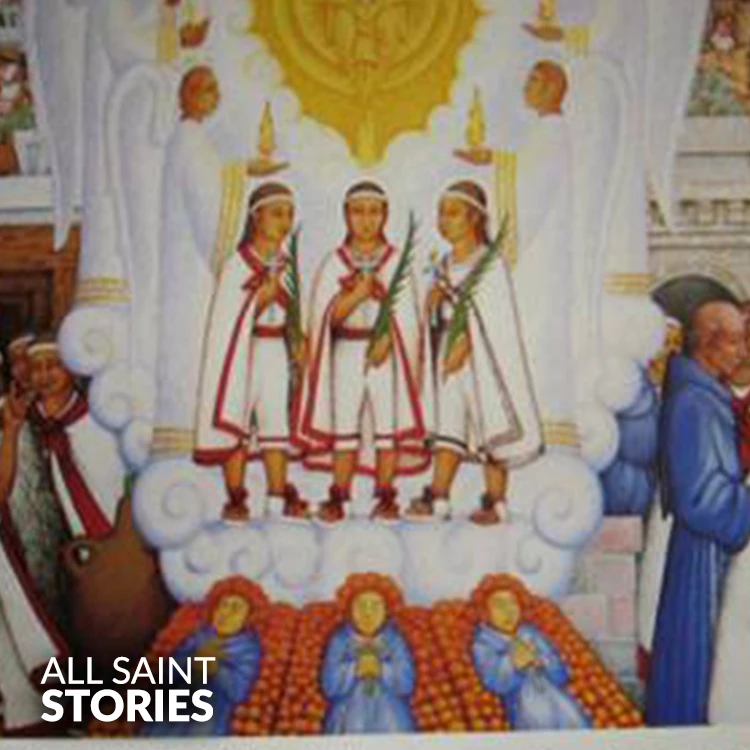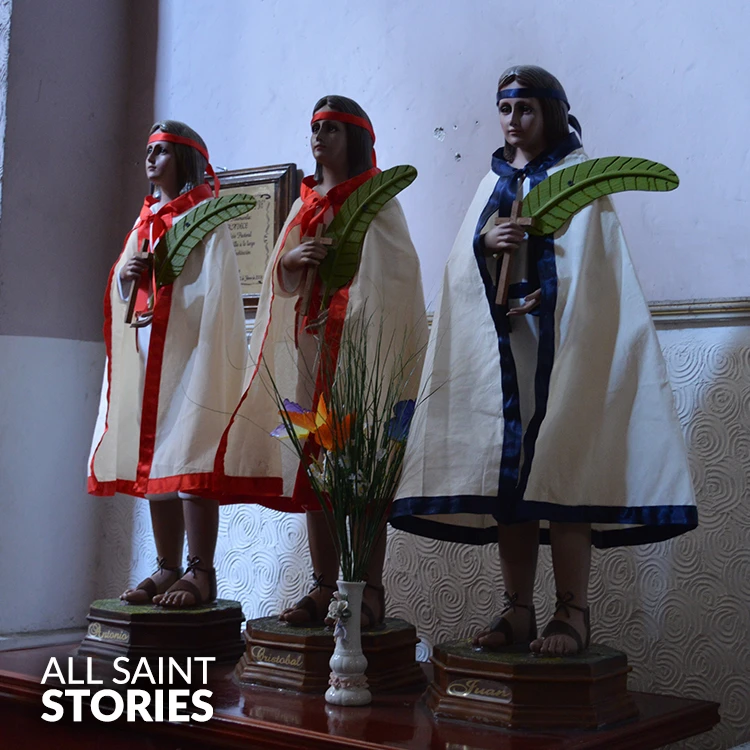Holy Child Martyrs of Tlaxcala, Brave and faithful witnesses to Christ, Pray for us to remain strong in our faith, Even in the face of adversity. Help us to live with courage, love, and devotion, And to follow Christ’s example of self-sacrifice and holiness. Amen.
ST. CHILD MARTYRS OF TLAXCALA
ST. CHILD MARTYRS OF TLAXCALA

The Child Martyrs of Tlaxcala—Cristóbal, Antonio, and Juan—were young indigenous boys from Mexico who embraced the Christian faith during early Spanish colonization. They were martyred between 1527 and 1529 for boldly spreading the Gospel and rejecting native idolatry. Canonized in 2017, they are recognized as the first indigenous martyrs of the Americas.
Cristóbal, Antonio, and Juan, collectively known as the Child Martyrs of Tlaxcala, were three young indigenous boys who lived in the early 16th century in what is now modern-day Mexico. They were among the first fruits of Christian evangelization in the New World, converting to the Catholic faith through the missionary efforts of the Franciscans shortly after the Spanish conquest. Each of them was a native of Tlaxcala, a region that had allied with the Spanish against the Aztec Empire and became one of the first areas to receive formal instruction in Christianity.
Cristóbal was the son of an indigenous nobleman and received Christian education at the missionary school. As he learned more about the Catholic faith, he began to challenge the traditional practices of his community, including idol worship and human sacrifice. His zeal to live as a Christian and his criticism of pagan rituals brought him into direct conflict with his father, who was deeply rooted in the ancestral beliefs. In a tragic act of opposition, Cristóbal’s own father beat him and ultimately killed him for his faith around the year 1527, making him a martyr at the tender age of 12 or 13.
Antonio and Juan, slightly older, were also students in the same missionary environment. They became passionate about spreading the Christian faith among their peers and communities. Like Cristóbal, they actively denounced the local pagan rituals and encouraged conversion to Christianity. Their efforts sparked resentment among some indigenous groups who saw them as traitors to their culture. In 1529, while traveling to evangelize in another town, Antonio and Juan were ambushed and beaten to death by local villagers who were hostile to the new religion.
Though young, all three boys showed exceptional courage, dedication, and conviction in the face of great danger. Their martyrdom serves as a powerful testimony to the strength of faith, especially among the youth. In the centuries following their deaths, their story continued to inspire generations of Catholics in Mexico and beyond. Their cause for sainthood gained momentum over time, and they were beatified by Pope John Paul II in 1990. Eventually, Pope Francis canonized them on October 15, 2017, without the need for a miracle due to their martyr status.
These child martyrs hold the distinction of being the first indigenous Catholics in the Americas to be recognized as saints. They are honored as patron saints of children and youth, and especially remembered in regions of Latin America where their story is taught in catechism and celebrated in liturgical feasts. Their legacy emphasizes the universality of the Church and the importance of young voices in the propagation of faith. Their feast day is celebrated on September 23 each year.
Video Not Found
The information on this website is compiled from various trusted sources. While we aim for accuracy, some details may be incomplete or contain discrepancies.
If you notice any errors or have additional information about this saint, please use the form on the left to share your suggestions. Your input helps us improve and maintain reliable content for everyone.
All submissions are reviewed carefully, and your personal details will remain confidential. Thank you for contributing to the accuracy and value of this resource.
Credits & Acknowledgments
- Anudina Visudhar (Malayalam) – Life of Saints for Everyday
by Msgr. Thomas Moothedan, M.A., D.D. - Saint Companions for Each Day
by A. J. M. Mausolfe & J. K. Mausolfe - US Catholic (Faith in Real Life) – Informational articles
- Wikipedia – General reference content and images
- Anastpaul.com – Saint images and reflections
- Pravachaka Sabdam (Malayalam) – Saint-related content and insights
We sincerely thank these authors and platforms for their valuable contributions. If we have unintentionally missed any attribution, please notify us, and we will make the correction promptly.
If you have any suggestion about ST. CHILD MARTYRS OF TLAXCALA
Your suggestion will help improve the information about this saint. Your details will not be disclosed anywhere.
© 2025 Copyright @ www.allsaintstories.com





 English
English
 Italian
Italian
 French
French
 Spanish
Spanish
 Malayalam
Malayalam
 Russian
Russian
 Korean
Korean
 Sinhala
Sinhala
 Japanese
Japanese
 Arabic
Arabic
 Portuguese
Portuguese
 Bantu
Bantu
 Greek
Greek
 German
German
 Dutch
Dutch
 Filipino
Filipino